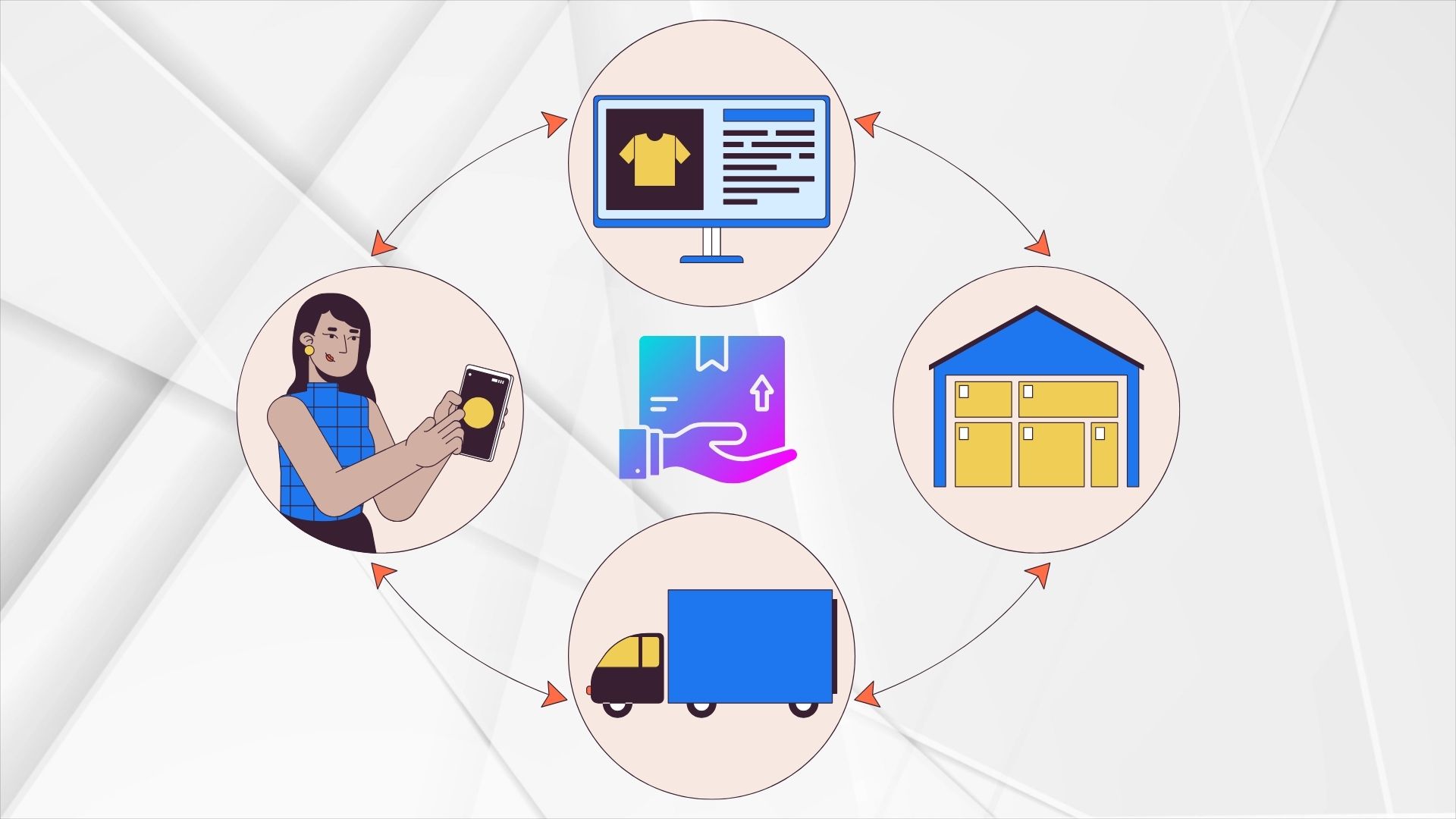In the dynamic world of e-commerce, where every second counts and competition is fierce, the inventory management is one of the crucial aspects of ensuring a smooth and seamless customer experience. Effective inventory management not only optimizes operational costs, but also ensures that products are available at the right time, avoiding inefficiencies, inventory overload, and supply issues.
In this article we will explore how the integration of advanced tools of demand forecasting can turn inventory management into a competitive advantage. We will also explore how these software solutions can make the entire process more agile, reduce costs and improve the customer experience.
Inventory management: a pillar for e-commerce success
The inventory management is the process of planning, monitoring, and controlling inventory levels in a company. In e-commerce, this process becomes particularly complex due to the high speed of sales flows, various seasonal variables, and the need to ensure that products are always available to online customers. The risk of running out of stock (stock-out) can damage brand image and reduce sales, while the excessive accumulation of unsold products (overstock) can lead to high storage costs and even waste.
Optimal inventory management provides the right balance between product availability and operating costs. Companies must always have the right product, in the right place, at the right time, without overstocking and keeping cash flow optimized.
Traditionally, many companies have relied on manual estimates or antiquated systems, but today new technologies offer solutions that significantly improve the accuracy and efficiency of these processes.
Forecasting demand: the first step toward optimal management
Demand forecasting is one of the most sensitive steps in the inventory management process. In the highly competitive e-commerce environment, accurately forecasting future sales volume is essential to avoid costly mistakes, such as overstocking that generates waste or product shortages that prevent sales from being realized.
Fortunately, today companies can make use of advanced technologies, such as theartificial intelligence (AI) and machine learning (ML), to make more accurate forecasts. These tools analyze large volumes of historical data, consider external factors (such as seasonal events, promotions, and market trends), and provide forecasts of future inventory needs. Modern platforms use advanced forecasting algorithms to determine demand levels with high accuracy, adapting dynamically to changes in the market.

Advanced tools for inventory management
As technology evolves, modern companies can leverage advanced software tools that integrate demand forecasting with inventory management, optimizing entire workflows and improving operational efficiency.
1. Warehouse management software (WMS)
I Warehouse Management Systems (WMS) are critical for real-time inventory tracking. These tools automate product storage and retrieval operations, optimize the use of warehouse space, and improve product tracking. Modern WMSs also offer advanced features such as omnichannel inventory management, which allow companies to manage their inventory across multiple platforms simultaneously, improving inventory management efficiency. In addition, these systems are designed to easily adapt to changes in e-commerce operations, such as seasonal spikes in demand, without compromising performance.
2. Demand Forecasting Systems (Demand Forecasting Systems).
Demand forecasting systems, powered by artificial intelligence and machine learning algorithms, are essential for obtaining accurate predictions regarding future demand. These tools analyze variables such as past sales trends, promotional events, seasonality, and even changes in consumer habits to generate accurate forecasts.
Advanced platforms offer predictive models that enable companies to adapt quickly to changes in demand, reducing the risk of out-of-stocks and optimizing real-time replenishment.
3. Omnichannel Technologies.
With the increasing development of e-commerce and sales across multiple channels (online, physical stores, mobile), the omnichannel management has become a priority for companies. Omnichannel solutions enable inventory tracking and management across all channels in real time, increasing visibility and flexibility in inventory allocation. These tools not only optimize the flow of goods, but also improve the customer experience, enabling faster and more accurate service.
4. Integration with ERP (Enterprise Resource Planning).
ERP systems, which manage all business functions (finance, sales, marketing, and logistics), can be integrated with inventory management systems to optimize the entire business process. Integration between ERP and WMS enables centralized and more accurate inventory management, reducing error margins and improving workflow efficiency. Modern ERP solutions also offer advanced reporting and analysis tools that help operations managers make more informed and timely decisions.

The benefits of efficient inventory management for e-commerce
Optimal inventory management not only helps improve operational efficiency, but also brings with it a number of crucial business benefits:
- Reduction in operating costs: Smart inventory management reduces logistics-related costs such as storage and transportation. With better inventory control, companies can minimize waste, optimize warehouse space, and cut costs associated with manual management.
- Improved customer experience: Companies that use advanced demand forecasting systems can ensure that products are always available when the customer seeks them. This not only improves customer satisfaction, but also reduces the risk of lost sales opportunities.
- Cash flow optimization: Companies that manage inventory efficiently can reduce capital tied up in inventory, freeing up financial resources for other investments. This leads to more agile and responsive management of business operations.
- Flexibility and adaptation to market changes: The adoption of advanced forecasting and management tools enables companies to adapt quickly to unpredictable changes, such as new consumption trends or seasonal spikes in demand. Inventory management thus becomes more dynamic and less rigid, enabling companies to react quickly to any challenge.
Conclusions
In a world where speed and efficiency are critical to success, the integration of advanced technologies for inventory management is the key to improving e-commerce operations. With the right demand forecasting strategy and the use of intelligent software, companies can not only optimize inventory management, but also improve their competitive position, reduce costs, and better satisfy their customers. Inventory management thus becomes a strategic element that can make a difference in an increasingly competitive market.
How FBY can support you in inventory management
FBY offers cutting-edge solutions to optimize inventory management in your e-commerce business. Through the implementation of demand forecasting systems based on artificial intelligence and machine learning, FBY analyzes sales data and market trends to accurately predict future inventory needs. This allows you to maintain optimal stock levels, avoiding both product shortages and surpluses.
In addition, FBY’s solutions integrate warehouse management tools (WMS) that monitor inventory in real time, optimize storage space and improve product traceability.
By relying on FBY, you can turn inventory management into a competitive advantage, improving customer satisfaction and increasing the profitability of your e-commerce business.




